What is the Dakota Access Pipeline?
While I’ve seen quite a bit of coverage of the Dakota Access pipeline project, none of the reports provided any specifics about the pipeline.
So I decided to satisfy my curiosity with a little research.
After sifting through the multitudes of non-substantive news articles and even more thinkpieces, I eventually landed on some primary materials. Along the way I also found out the alternatives that were considered and discarded.
What became clear is that this pipeline and others like it are needed as long as crude oil production continues. The other transport options, truck and rail, simple do not have the capacity to carry the amount of crude oil being produced. Oil transport has been causing significant delays in the shipment of grain and other foodstuffs for several years.
Without a major economic shift away from fossil fuels or the elination of domestic oil production, pipelines like this will be here to stay.
The Dakota Access Pipeline Project
The pipeline, known as DAPL, is a way to transport at least 570,000 barrels of crude oil per day from the Bakken and Three Forks oil fields in North Dakota to an oil storage facility near Patoka, Illinois.1
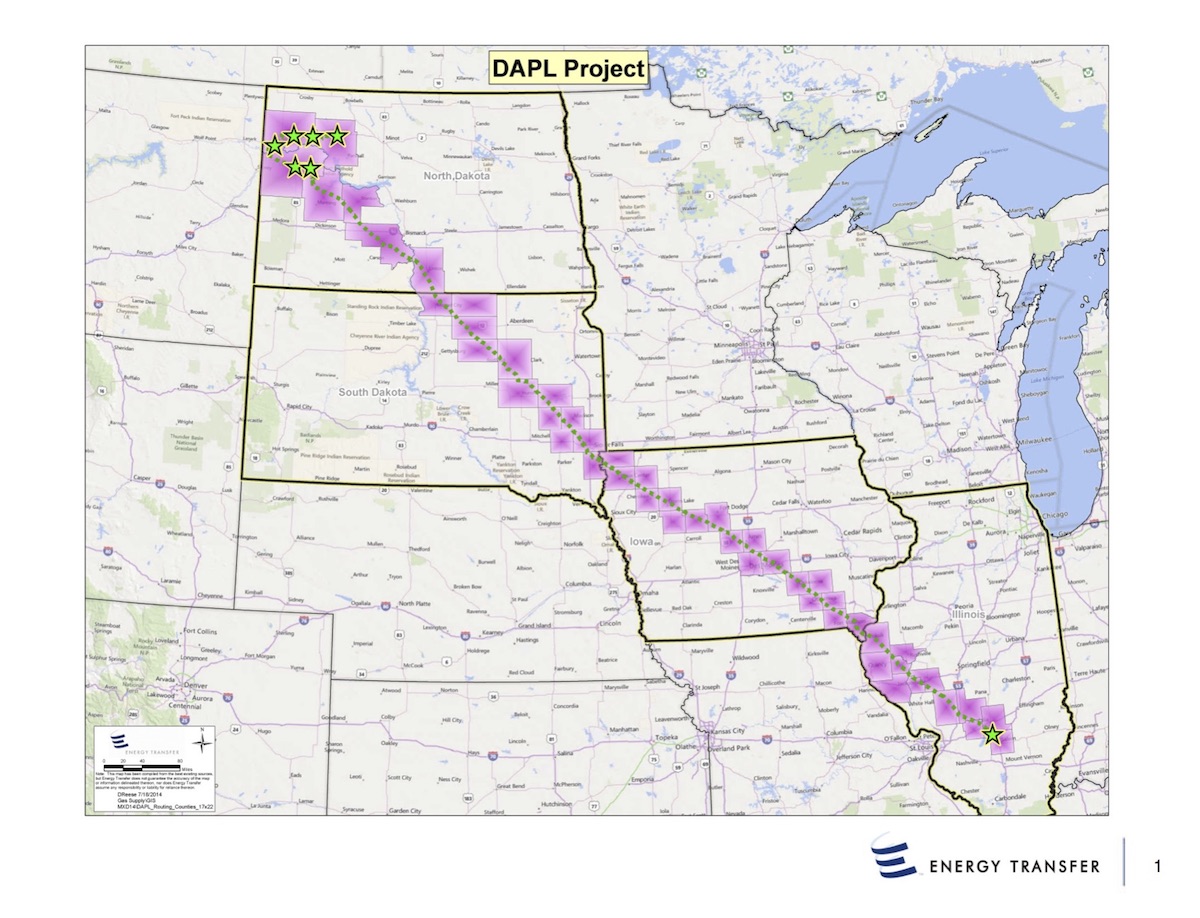 The route of the DAPL from North Dakota to Illinois. The counties affected by the pipeline are highlighted in purple.
The route of the DAPL from North Dakota to Illinois. The counties affected by the pipeline are highlighted in purple.In North Dakota, DAPL runs from the oil-rich northwestern corner of the state and exits from the middle of the state’s southern border into South Dakota.
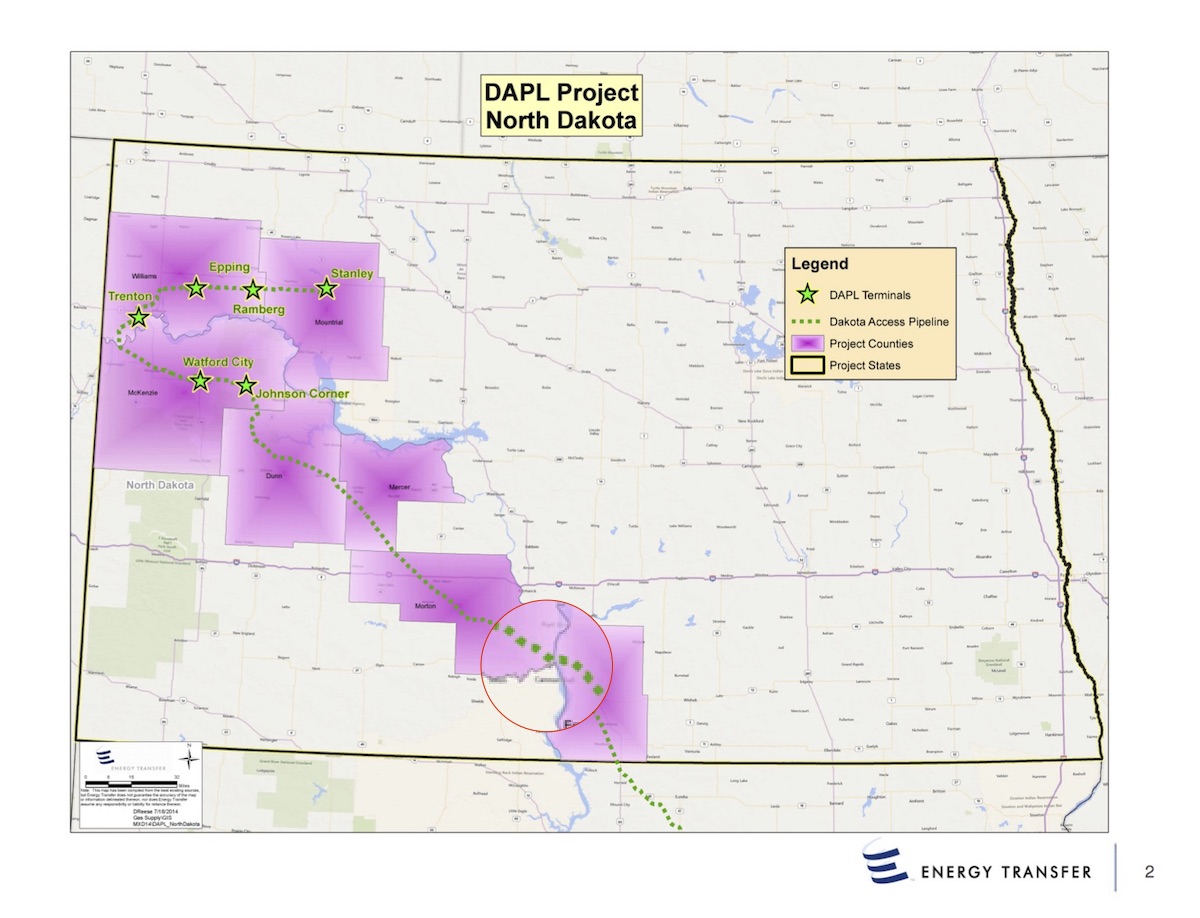 The path of DAPL through North Dakota, with affected counties highlited in purple. The magnified section at bottom center shows the area where the pipeline was planned to cross the Missouri River.
The path of DAPL through North Dakota, with affected counties highlited in purple. The magnified section at bottom center shows the area where the pipeline was planned to cross the Missouri River.During the planning stage, the Army Corp of Engineers evaluated where DAPL could cross the Missouri River. Two locations were evaluated. One crossed upstream of North Dakota’s capital, Bismarck, and was considered an alternative route.2
The second route was the crossing at Lake Oahe, south of Bismarck but upstream of the Standing Rock Sioux Reservation. This crossing was preferred because it would make the pipeline:
- 10.6 miles shorter
- cross 11 less floodplains
- cross 24 less freshwater wetlands
- cross 27 less roads
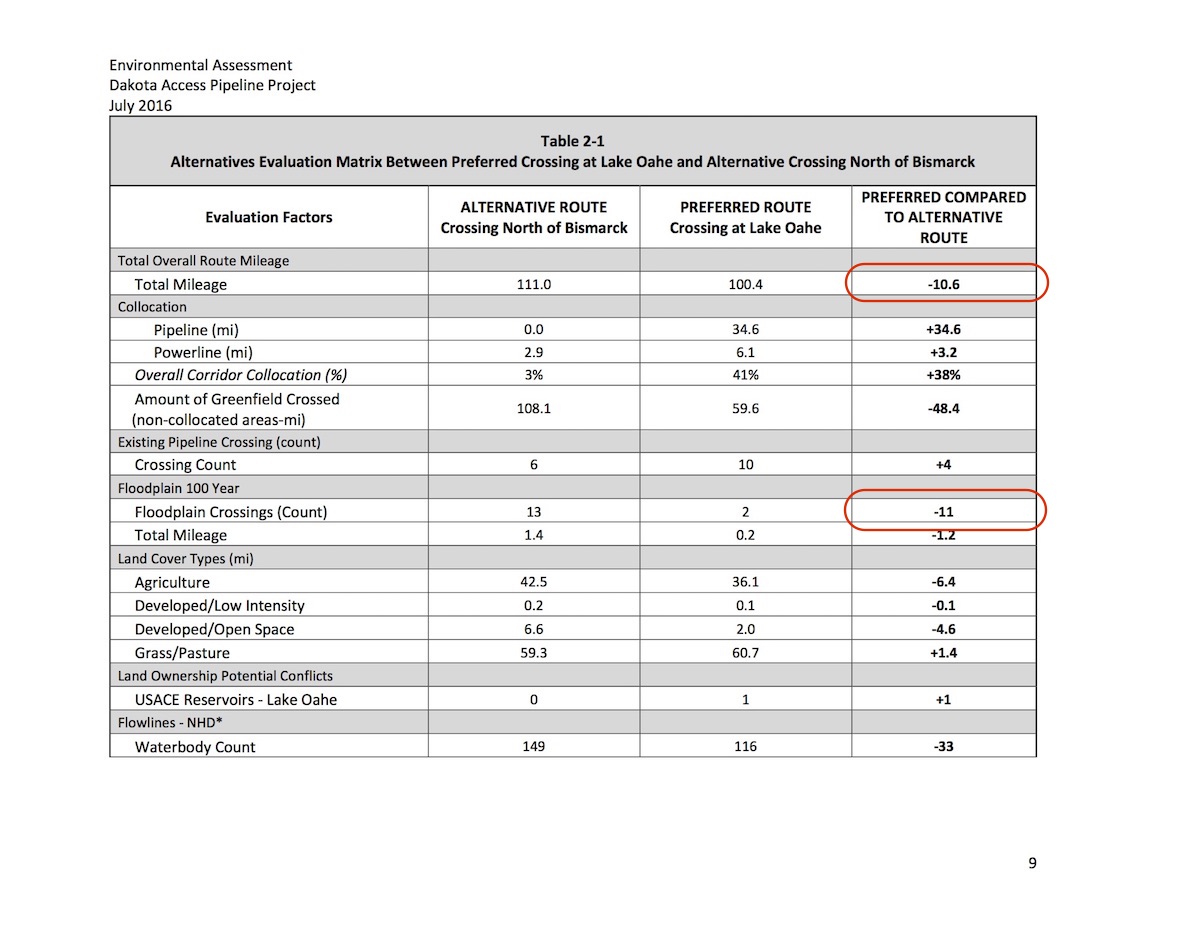 Table 2-1, extracted from Army CoE environmental assessment of DAPL.
Table 2-1, extracted from Army CoE environmental assessment of DAPL.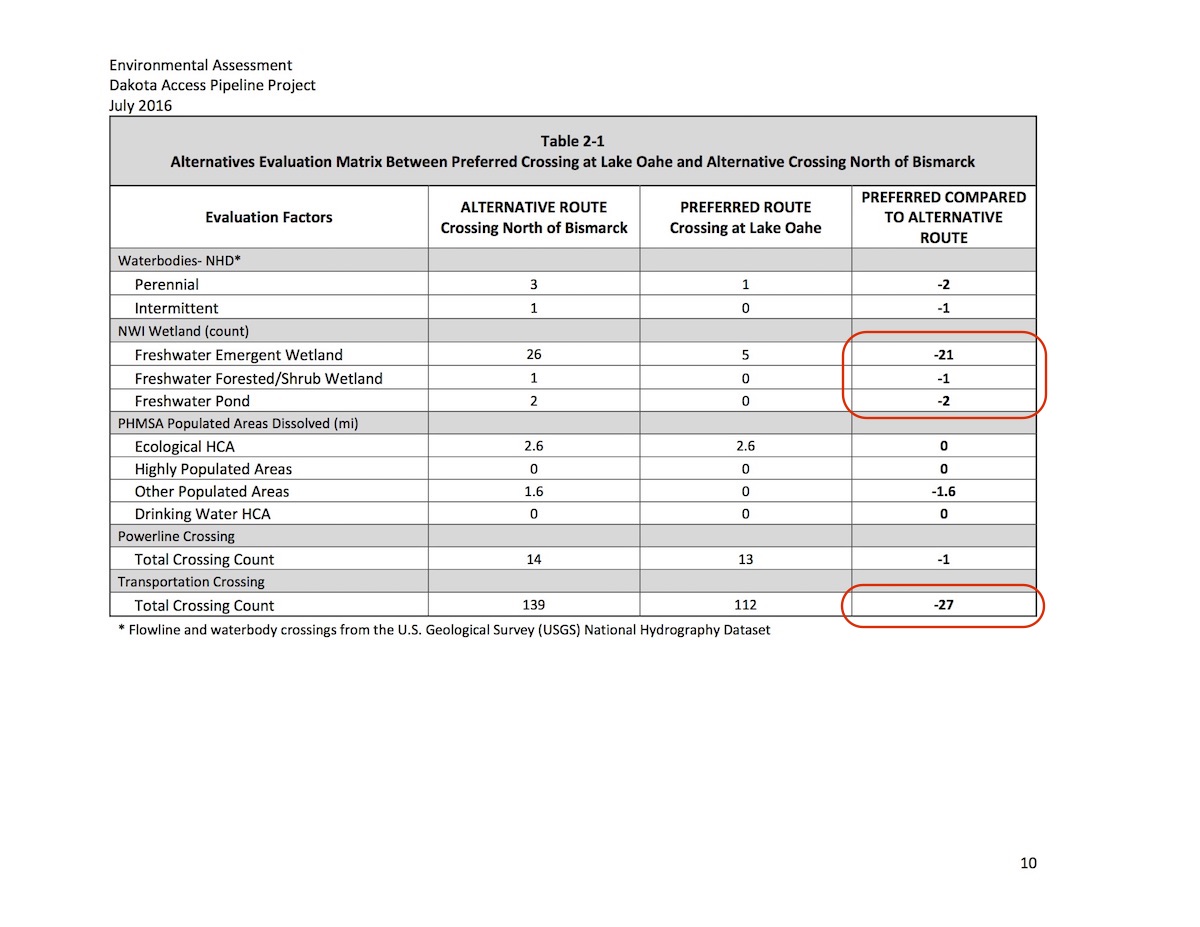 Table 2-1 (con't), extracted from Army CoE environmental assessment of DAPL.
Table 2-1 (con't), extracted from Army CoE environmental assessment of DAPL.The estimated cost would be also be $22.5 million less than the North Bismarck crossing.
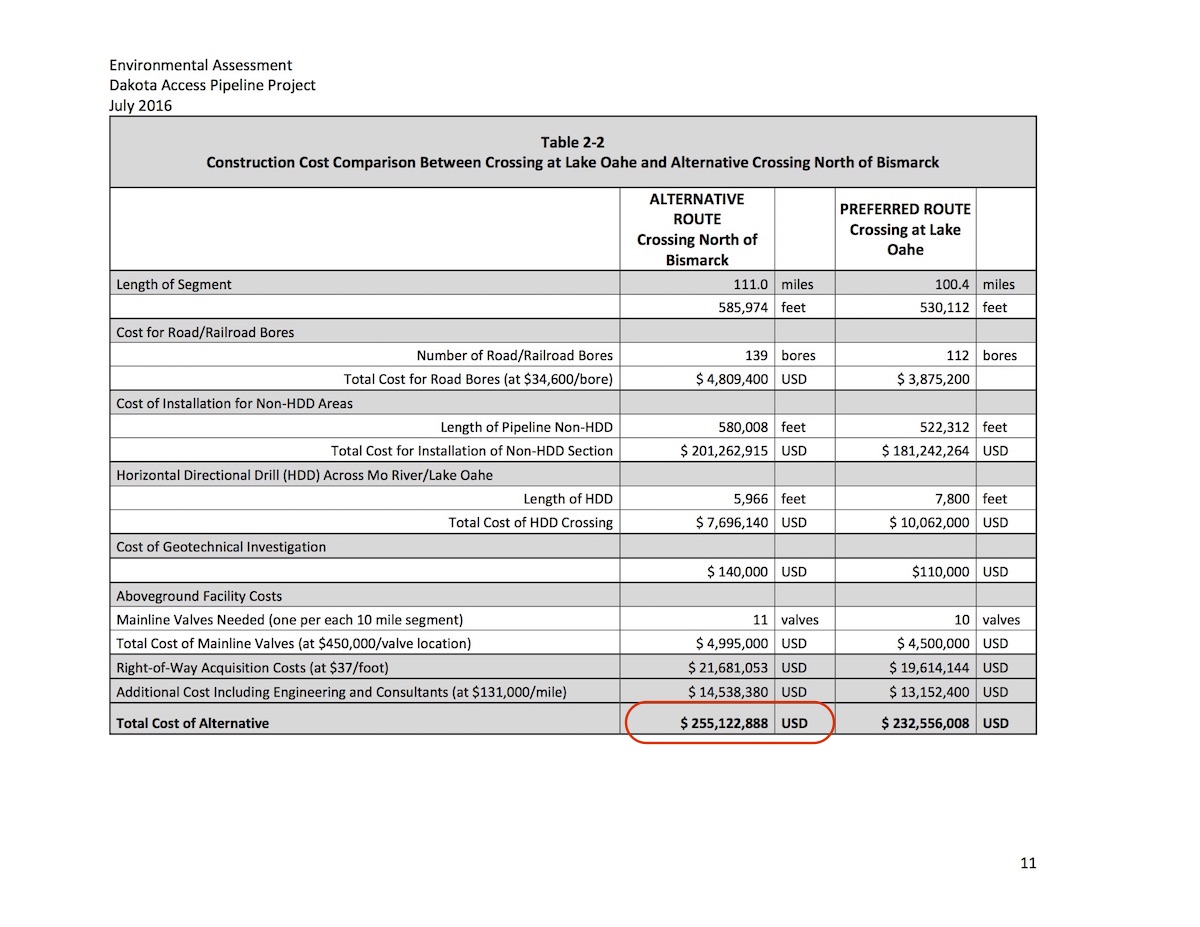 Table 2-2, extracted from Army CoE environmental assessment of DAPL.
Table 2-2, extracted from Army CoE environmental assessment of DAPL.During the environmental assessment, the ACoE also looked at the need for a pipeline as compared to other forms of oil transport. As there is no existing pipeline, there was no option expand capacity. Both trucking and rail transport were also considered.
Trucking was ruled out for several reasons.
Factors such as road safety, roadway capacity, and a lack of reliability due to seasonal constraints, in addition to other logistical issues involving availability of labor force, trailer truck capacity, and economics, all contribute to truck transportation not being a realistic alternative. — Environmental Assessment, Dakota Access Pipeline Project, July 2016, §2.1.2
Railroad transport was also found to not be a viable option for a multitude of reasons.
Negative impacts from the growth in popularity of rail as a method of long-distance transportation of crude oil include delays that disrupt the agricultural sector, reductions in coal-fired power plant inventories, and significant production issues in the food production industry. — Environmental Assessment, Dakota Access Pipeline Project, July 2016, §2.1.3
The report goes onto cite exactly how much backlog currently exists in the US rail system.
In August 2014, reports filed with the federal government indicated that the Burlington Northern Santa Fe Railway had a backlog of 1,336 rail cars waiting to ship grain and other products, while Canadian Pacific Railway had a backlog of nearly 1,000 cars (Nixon, 2014). — Environmental Assessment, Dakota Access Pipeline Project, July 2016, §2.1.3
The ACoE also considered the option of not taking any action at all.
Although the “no action” alternative itself would not incur direct environmental impacts, it would also not address the existing demand to transport crude oil to refining facilities. Market demands would likely compel shippers to rely on alternative methods of crude oil transport such as truck or rail. — Environmental Assessment, Dakota Access Pipeline Project, July 2016, §2.2
Based on these factors, the alternative route north of Bismarck was discarded in favor of the Lake Oahe crossing.
